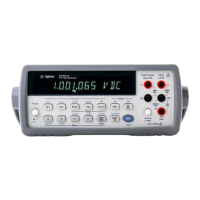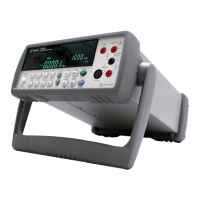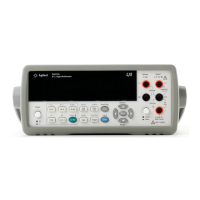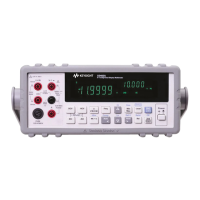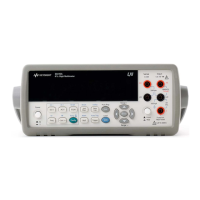24-Hour Accuracy
The 24-hour accuracy specification indicates the meter’s relative accuracy
over its full measurement range for short time intervals and within a
stable environment. Short-term accuracy is usually specified for a
24-hour period and for a ± 1° C temperature range.
90-Day and 1-Year Accuracy
These long-term accuracy specifications are valid for a 23° C ± 5° C
temperature range. These specifications include the initial calibration
errors plus the meter’s long-term drift errors.
Temperature Coefficients
Accuracy is usually specified for a 23° C ± 5° C temperature range.
This is a common temperature range for many operating environments.
You must add additional temperature coefficient errors to the accuracy
specification if you are operating the meter outside a 23° C ± 5° C
temperature range.
Configuring for Highest Accuracy Measurements
The measurement configurations shown below assume that the meter is
in its power-on or reset state. It is also assumed that manual ranging is
enabled to ensure proper full scale range selection.
• Front Panel: Configure the meter for 10 NPLC and use Digital Filter
type set to MEDIUM (50 readings). Do not use the Analog Filter type.
• Remote Operation: Configure the meter for 200 NPLC and turn the
input filters OFF. Use the statistics functions to reduce noise in the
measurements. (See page 146).
• Use 4-wire Ohms and Offset Compensation for greater resistance
measurement accuracy.
• Use NULL to remove test lead resistance for 2-wire Ω measurements.
• Use NULL to remove to remove interconnection offset voltages for
voltage and temperature measurements.
8
Chapter 8
Configuring for Highest Accuracy Measurements
287
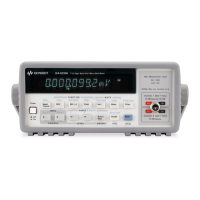
